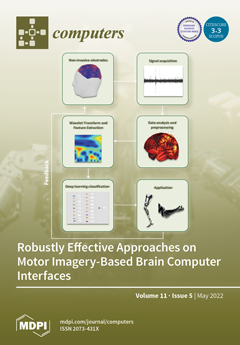Open AccessArticle
Comparison of Statistical and Machine-Learning Models on Road Traffic Accident Severity Classification
by
Paulo Infante, Gonçalo Jacinto, Anabela Afonso, Leonor Rego, Vitor Nogueira, Paulo Quaresma, José Saias, Daniel Santos, Pedro Nogueira, Marcelo Silva, Rosalina Pisco Costa, Patrícia Gois and Paulo Rebelo Manuel
Cited by 18 | Viewed by 3621
Abstract
Portugal has the sixth highest road fatality rate among European Union members. This is a problem of different dimensions with serious consequences in people’s lives. This study analyses daily data from police and government authorities on road traffic accidents that occurred between 2016
[...] Read more.
Portugal has the sixth highest road fatality rate among European Union members. This is a problem of different dimensions with serious consequences in people’s lives. This study analyses daily data from police and government authorities on road traffic accidents that occurred between 2016 and 2019 in a district of Portugal. This paper looks for the determinants that contribute to the existence of victims in road traffic accidents, as well as the determinants for fatalities and/or serious injuries in accidents with victims. We use logistic regression models, and the results are compared to the machine-learning model results. For the severity model, where the response variable indicates whether only property damage or casualties resulted in the traffic accident, we used a large sample with a small imbalance. For the serious injuries model, where the response variable indicates whether or not there were victims with serious injuries and/or fatalities in the traffic accident with victims, we used a small sample with very imbalanced data. Empirical analysis supports the conclusion that, with a small sample of imbalanced data, machine-learning models generally do not perform better than statistical models; however, they perform similarly when the sample is large and has a small imbalance.
Full article
►▼
Show Figures





